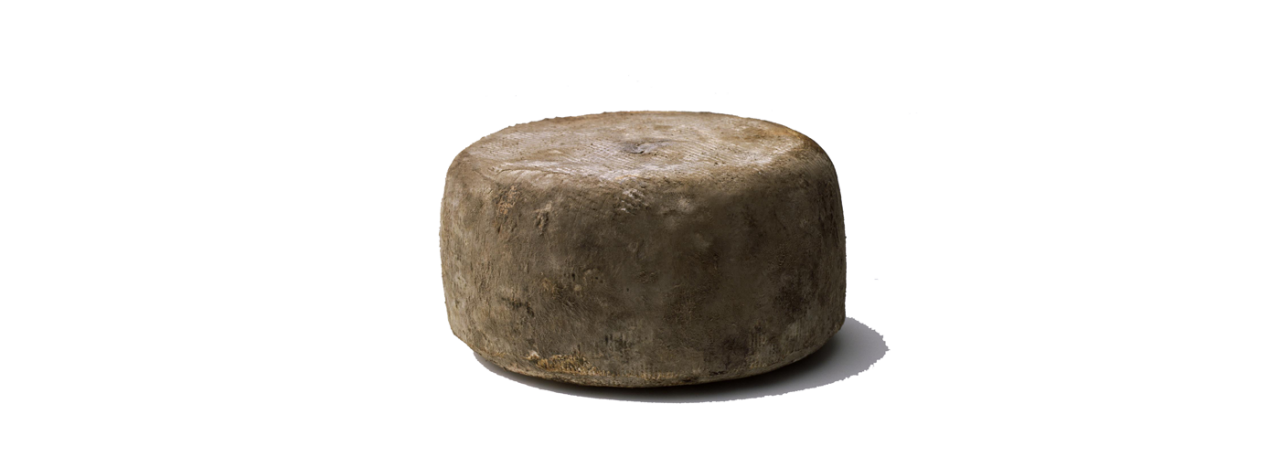.png.transform/rendition-xs/image_image%20(1).png)
Garrotxa cheese
Cheese made exclusively with whole goat's milk, produced traditionally in the area of La Garrotxa (Girona, Catalonia) and throughout the whole of the territory of Catalonia. This is an aged or young cheese with a soft paste and a molded texture.
Tasting notes
The cheese must be whole, without any cracks or holes visible from the exterior, and have a regular cylindrical shape with rounded edges and be completely wrapped in its characteristic fungus covering. It must have a more or less uniform color, although this may range from gray-blue to ash-like tones, but always free from spots or irregular coloring. The top of the cheese may be flat or slightly convex.
Other notes
The paste is a clean white color with ivory tones. It has a consistent and compact texture, a penetrating aroma and an assertive taste.
Production / Processing method
The milk is conserved between 4º-6ºC / 39-42ºF in the cooling tank after milking and before making the cheese, for a maximum of 48 hours.
Pasteurization: the milk is pasteurized and then rapidly cooled to 37ºC / 98.6ºF.
Fermentation: Aging the milk: once the milk is in the curdling tank at 37ºC / 98.6ºF., the milk is fermented by the addition of between 0.5 and 1 ml. of calcium chloride per liter. The milk is allowed to stand for about 30 to 60 minutes.
Curdling: with the temperature of the milk at 30º-32ºC / 86-89ºF, the animal rennet is added; no other type of rennet is acceptable.
The curd is cut to the size of a kernel of corn. It is left to stand for between 10 and 30 minutes and then stirred between 15 and 20 minutes more. The whey is then gradually extracted.
Molding and pressing: at a production room temperature of 20ºC / 68ºF , the molds are manually filled with the curd. The cheese is lightly pressed.
Salting: the cheeses are salted by means of immersion in concentrated brine at 20%. The 0.5 kg / 1.1 lb and 1 kg / 2.2 lb format cheeses are conserved preferably at a temperature of between 10º-12ºC / 50º-53ºF for 2 to 4 hours respectively. The brine solution is replaced regularly according to the weight of the cheese being made, as established in a self-regulated protocol. Hand salting is accepted to 2% of the weight of the cheese, although this is not common.
Drying: Garrotxa cheese is dried at 16º-18ºC / 60.8º-64.4º F and relative humidity of 75-80% for approximately 24 hours, until the formation of the rind.
Ripening or finishing: the ripening rooms have a temperature of between 10º-12ºC 7 50º-53ºF and a relative humidity of 85-90%. As each batch enters the chamber after its immersion in brine, the shelves are marked to distinguish the batches to be ripened from the other ones. The cheeses, both the small and medium format, remain in the ripening rooms for approximately 21 days. During the first days they are turned until they develop an even-colored grayish rind and an ash-like appearance.
Conservation: this is done at a temperature of 4º-8ºC / 39.2º-46.4º F and a relative humidity of 70-80% for a maximum period of four months from the date of production.
Geography / Relief and climate
The area of La Garrotxa is in northeast Catalonia, between the territories of Alto Ampurdán and Ripollés in the province of Girona. The area is divided into two zones: Alta Garrotxa and Baja Garrotxa.
Alta Garrotxa has deep and narrow valleys with rocky cliffs and high crags. In contrast, the Baja Garrotxa area has flatter valleys due to previous volcanic activity. The capital of the region is Olot.
The region has a Mediterranean mid-mountain climate with abundant rainfall throughout the year, although winter is the driest season. This copious rainfall means that the summers are cool, whereas the winters are cold thanks to the influence of the Pyrenees.
The area of La Garrotxa is in northeast Catalonia, between the territories of Alto Ampurdán and Ripollés in the province of Girona.

